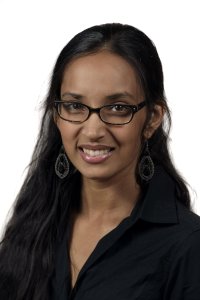Presented By: Complex Systems Advanced Academic Workshop (CSAAW)
Networks and Identity Drive Geographical Properties of the Diffusion of Linguistic Innovation
Aparna Ananthasubramaniam, PhD Student, School of Information, University of Michigan

VIRTUAL SEMINAR - ZOOM MEETING LINK
Link: https://umich.zoom.us/j/99929959678
Passcode: csaaw
Abstract:
Adoption of cultural innovation (e.g., music, beliefs, language) is often geographically correlated, with adopters largely residing within the boundaries of relatively few well-studied, socially significant areas. These cultural regions are often hypothesized to be the result of either (i) identity performance driving the adoption of cultural innovation, or (ii) homophily in the networks underlying diffusion. While social scientists often treat either network or identity as the core social structure in modeling language change, we show that key geographic properties of diffusion actually depend on both factors, as each one influences different mechanisms of diffusion. Specifically, we find that the network principally drives spread between urban counties via weak-tie diffusion, while identity plays a disproportionate role in transmission between rural counties via strong-tie diffusion. Our work suggests that models must integrate network and identity in order to understand and reproduce the adoption of innovation.
Link to Paper:
https://arxiv.org/abs/2202.04842
Speaker Bio:
Aparna is a third-year Ph.D. student at the University of Michigan's School of Information, advised by Daniel Romero and David Jurgens. Her research interests include computational social sciences and complex systems.
Link: https://umich.zoom.us/j/99929959678
Passcode: csaaw
Abstract:
Adoption of cultural innovation (e.g., music, beliefs, language) is often geographically correlated, with adopters largely residing within the boundaries of relatively few well-studied, socially significant areas. These cultural regions are often hypothesized to be the result of either (i) identity performance driving the adoption of cultural innovation, or (ii) homophily in the networks underlying diffusion. While social scientists often treat either network or identity as the core social structure in modeling language change, we show that key geographic properties of diffusion actually depend on both factors, as each one influences different mechanisms of diffusion. Specifically, we find that the network principally drives spread between urban counties via weak-tie diffusion, while identity plays a disproportionate role in transmission between rural counties via strong-tie diffusion. Our work suggests that models must integrate network and identity in order to understand and reproduce the adoption of innovation.
Link to Paper:
https://arxiv.org/abs/2202.04842
Speaker Bio:
Aparna is a third-year Ph.D. student at the University of Michigan's School of Information, advised by Daniel Romero and David Jurgens. Her research interests include computational social sciences and complex systems.